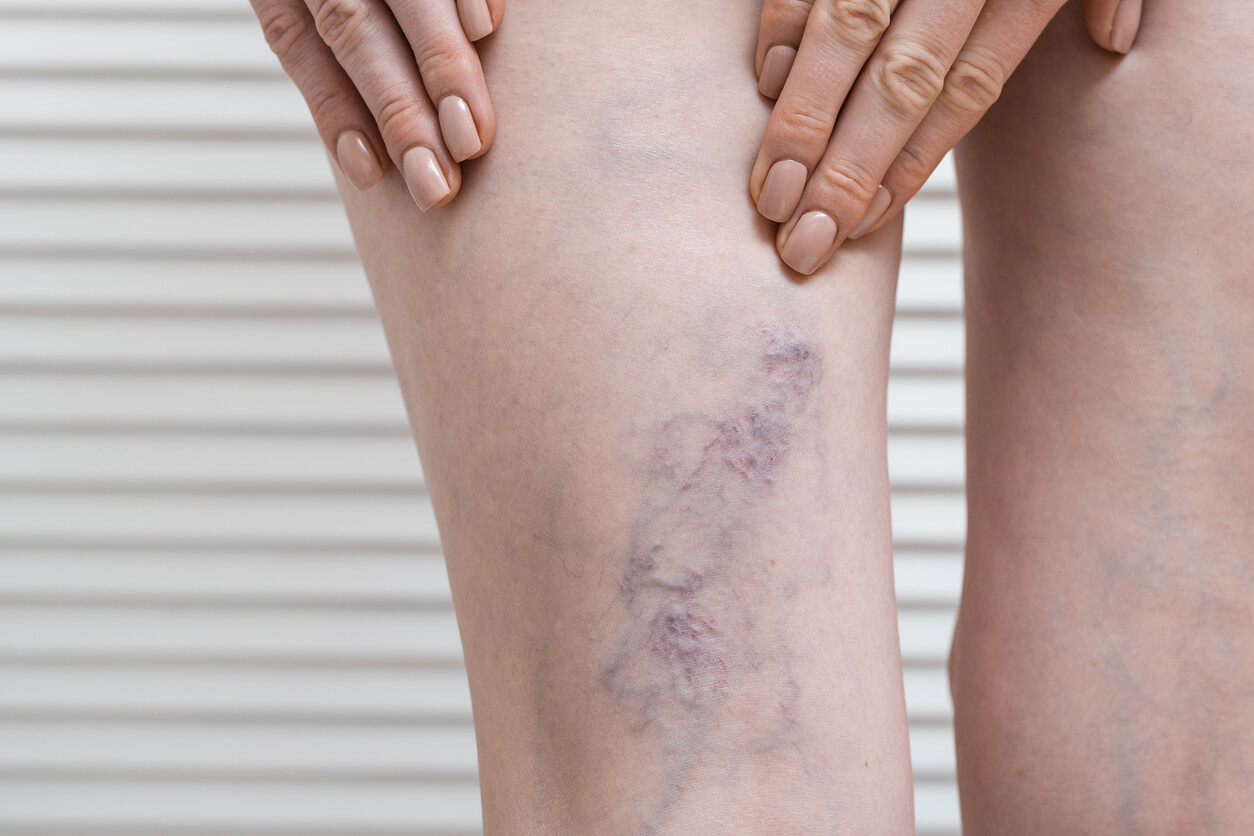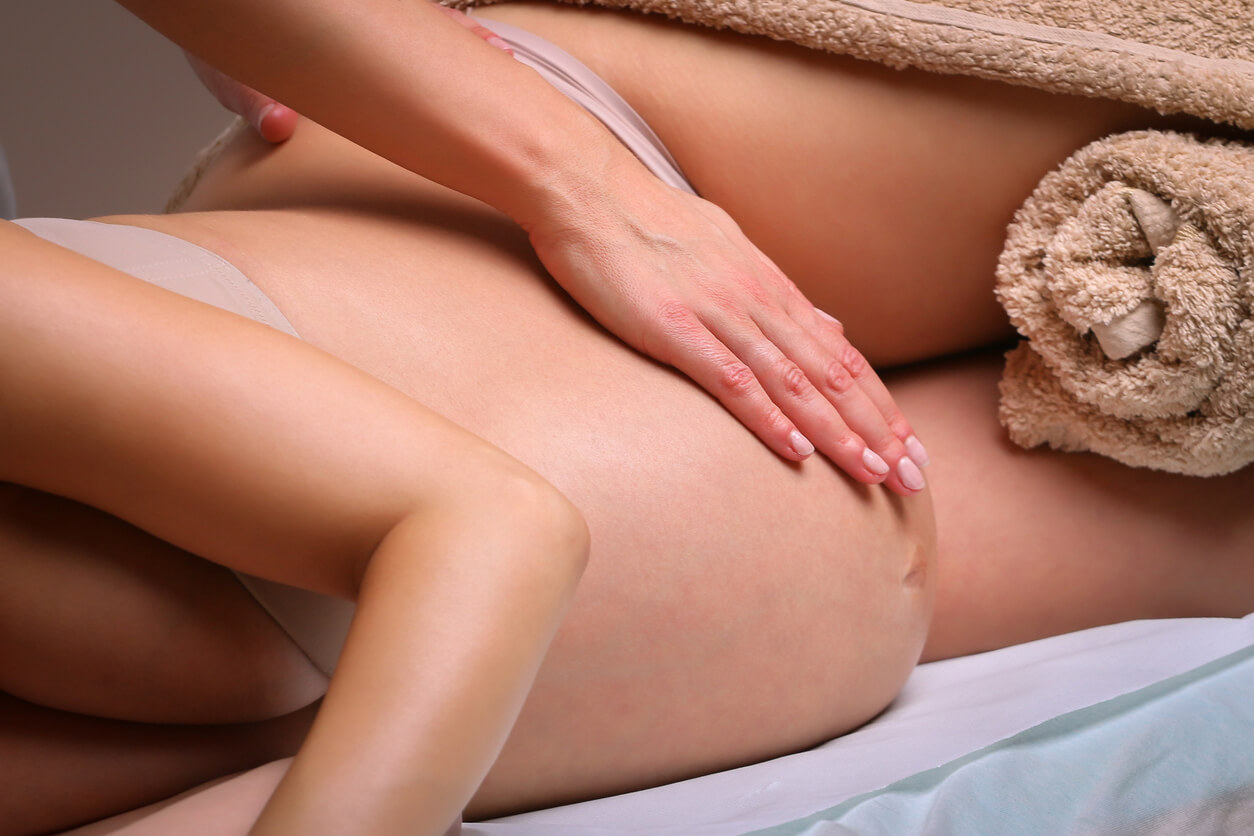Tired Legs in Pregnancy: Causes and What to Do

Tired legs in pregnancy are a very common and annoying sensation for women. Although they don’t pose a severe health hazard, the quality of life of pregnant women is altered by the discomfort they cause.
In this article, we’ll explain everything you should know about them and how to prevent this condition. Be sure to keep reading!
Tired legs in pregnancy
The feeling of tired legs in pregnancy is characterized by the “heaviness” that’s perceived in the lower extremities when trying to walk, move them, or simply stand. Although it’s a symptom that’s not serious, it reduces the quality of life of pregnant women.
In general, this discomfort is accompanied by cramps, pain, tingling, and itching in the legs and feet. In some cases, it’s also possible to observe edema around the calves and ankles. This situation increases the volume and diameter of the lower part of the body.
Here are the causes of this condition.
Venous insufficiency
One of the main causes of tired legs is venous insufficiency, which hinders the return of blood from the feet to the heart. Therefore, part of the fluid contained in these blood vessels remains in the legs and distends the tissues. As the nerves are compressed, the sensation of heaviness, pain, and tingling is generated. And also, varicose veins appear.
Gestational hormones
During the 9 months of gestation, the body is in a process of changes and hormones have a lot to do with these modifications.
For physiological reasons, the maternal body must increase the amount of liquid that circulates through its blood vessels, as it must supply the placenta and the developing baby.
In turn, to promote the arrival of blood to the fetus, the veins must dilate and become more permeable, an effect that occurs both at the level of the placenta and in the legs.
Therefore, pregnancy itself predisposes women to fluid retention, which results in swelling and the feeling of tired legs. However, there are some ways to reduce this discomfort.

You may be interested in: Swollen Feet during Pregnancy: Remedies to Prevent Pain
Tips to relieve tired legs during pregnancy
As we’ve said before tired legs syndrome is caused by an insufficiency in venous return, caused by normal gestational changes. However, weight gain, physical inactivity, and diets rich in sodium can worsen this condition. Therefore, we’re going to give you some recommendations to improve the appearance of your legs.
1. Maintain an adequate state of hydration
Sufficient hydration is essential and should be ensured every day.
Although it sounds contradictory, an adequate intake of water promotes proper blood circulation and prevents fluid from accumulating in the “lower” tissues of the body. This way, you won’t only avoid edema, but also improve the feeling of tired legs.
In addition to drinking water, you should avoid herbal teas (for their stimulating effects on urination) and moisturize the skin of your legs with lotion in order to improve the tightness of the skin tissue.
2. Perform daily leg massages
It’s a good idea to wet the calves with cold water after showering to reduce the feeling of heaviness of the lower limbs. Even massaging in an upward direction is another good option to mitigate fatigue. Take advantage of the moment after your bath to apply a moisturizing lotion while massaging from your feet to your thighs.
You can use draining and firming creams, or cold gels and vasodilators for even better results.
3. Leave your legs elevated for a few hours during the day to promote natural drainage
After a day in which you’ve been standing for long periods of time, it’s good to raise your legs above heart level to relieve edema and associated discomfort.
This simple practice stimulates blood circulation back to the heart.
As with standing for long periods, having been seated for many hours can also have a negative impact on the legs. Therefore, it’s best to get up every 30 minutes and walk a little to prevent the blood from stagnating and the symptoms from starting.
Read also: Restless Legs Syndrome: Causes and Treatment
4. Control your weight and adopt healthy habits
Maintaining a healthy diet that’s high in fiber and low in salt and saturated fats is ideal. Also, regular physical activity is recommended to prevent overweight, fatigue, and swelling of the legs.
The exercises that most promote blood circulation in pregnancy are swimming and recreational cycling without resistance.
On the other hand, good sleep habits and adequate night’s rest also help to avoid fluid retention in the legs.
5. Wear the right clothes
Clothing also plays an important role in the beginning of leg swelling and heaviness during pregnancy. In fact, very tight clothing hinders the proper venous return from the legs to the heart.
Therefore, try to choose loose-fitting clothes and avoid girdles, tight pants, elastic stockings, or belts. At the same time, it’s a good idea to wear knee-high compression stockings and comfortable shoes, without abusing high heels.

Tired legs in pregnancy and quality of life
Tired legs in pregnancy can affect the quality of life of the expectant mother if not given timely attention. Therefore, at the first signs or symptoms, it’s important to start with the above-mentioned measures or consult a doctor. Although it’s not a serious problem, it’s increasingly common and can be improved.
All cited sources were thoroughly reviewed by our team to ensure their quality, reliability, currency, and validity. The bibliography of this article was considered reliable and of academic or scientific accuracy.
- Davison JM. Edema in pregnancy. Kidney Int Suppl. 1997 Jun;59:S90-6. PMID: 9185112.
- Soma-Pillay, P., Nelson-Piercy, C., Tolppanen, H., & Mebazaa, A. (2016). Physiological changes in pregnancy. Cardiovascular journal of Africa, 27(2), 89–94. https://doi.org/10.5830/CVJA-2016-021
- National Health Service U.K. (s/f) Swollen ankles, feet and fingers in pregnancy. [Intenet] Disponible en: https://www.nhs.uk/pregnancy/related-conditions/common-symptoms/swollen-ankles-feet-and-fingers/
This text is provided for informational purposes only and does not replace consultation with a professional. If in doubt, consult your specialist.








